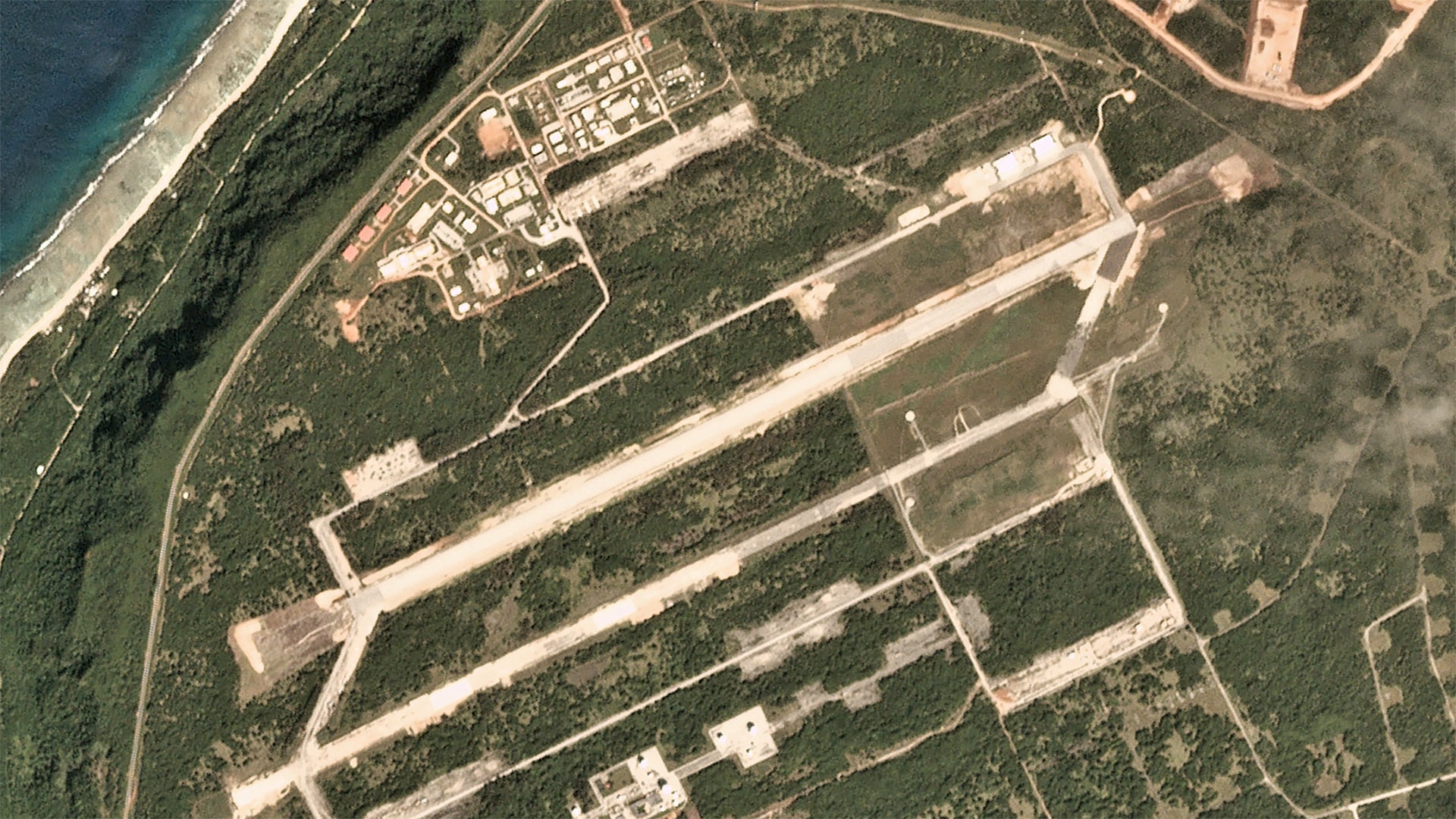The threat of losing major runway facilities throughout the Pacific Theater during even a limited conflict with a peer state competitor like China is becoming more urgent by the day for the U.S. military. The fact that even the sprawling Andersen Air Force Base on Guam is vulnerable to barrages of Chinese ballistic missiles, as well as other forms of attack, has pushed the Air Force to expand forward basing options on Wake Island and nearby Tinian Island. Now, Andersen’s jungle encircled Northwest Field airstrip, which, even after some improvements, remains quite austere, is going to see fighter jets come and go soon as part of the yearly multi-national Cope North airpower exercise that takes place primarily from Guam.
Air Force Magazine’s
Brian Everstine was the first to break the news that Andersen’s Northwest Field will host F-35s from Eielson Air Force Base and F-16s from Misawa Air Base. In the past, only C-130s and helicopters operated from the field, which has been lengthened recently, and did so infrequently. So, rapidly adapting it to accommodate far more fragile and infrastructure-dependent fighter aircraft is a huge and somewhat unprecedented task for the USAF.

Overall, the use of the austere airfield during Cope North will work to better hone what the Pentagon calls Agile Combat Employment tactics, in which deployments of various assets are far less predictable and more nimble in general, often leveraging small groups of aircraft operating from austere and other non-traditional locations. This concept of operations also increasingly leverages smaller ground support teams and includes building up austere bases to minimum operating requirements and then quickly moving on to another area so as to drastically complicate the enemy’s defensive and offensive plans. It also allows for greater survivability of the Agile Combat Employment package.
There are some improvements being made to the 8,000-foot strip before the February exercise kicks off—namely the addition of an emergency arresting gear system. This is a critical piece of equipment for Air Force jets that experience emergencies and need help coming to a stop before running off the runway. They are not used to ‘trap’ Air Force jets as they can do with Marine and Navy fighters, including on short fields as an operational concept, but they can be used to shorten the landing roll of Air Force jets some operational instances. The USMC is looking to take more advantage of its carrier-capable F/A-18C/D and F-35C‘s short-field capabilities for expeditionary operations. You can read all about this in this recent War Zone exclusive.

Northwest Field is also home to a number of other assets and facilities, and some of them are quite high-security, including the THAAD missile battery that protects the island from low-volume ballistic missile barrages, as well as major satellite communications nodes. A couple of small support buildings have been built on the strip’s eastern end (seen in the banner satellite photo in this post, taken just days ago), but beyond that, there are no facilities there that are normally found at the bases these jets fly out of, including even basic hangars. For comparison, take a look at the F-35’s specially-built air combat fortress at Eielson Air Force Base in Alaska. The strip is also encircled by extremely dense jungle that is patrolled by specialized jungle teams. As such, using it to execute some new basing tactics that leverage high-end air combat assets that are not at home in this type of environment is ambitious, to say the least.

This aspect of Cope North will see F-16C/D Vipers and F-35 Lightning IIs land, refuel, rearm, and fly out as if they were sustaining actual combat operations from the remote locale. This is challenging to do during high-tempo operations even at a fully outfitted base. Doing it at this remote airstrip, with no communications, motor pool, crash response forces, administration offices, life support shop, and so much more that goes into operating these advanced aircraft, will be far more so. Even getting fuel there, assuming they act as if it were a remote island base onto itself, will be a challenge. Expect to see MC-130 special operations aircraft refueling and providing rearming support for these jets on the ground as they have become more accustomed to doing as of late. Even wildlife can become a major operational issue that will have to be dealt with.

With all this in mind, the logistics of even attempting this drill is sure to provide a ton of lessons that can be used to refine what is becoming an increasingly necessary basing strategy.
We will report on how this all works out when Cope North kicks off next month.
Contact the author: Tyler@thedrive.com
